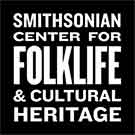SMITHSONIAN CENTER FOR FOLKLIFE & CULTURAL HERITAGE
How Indigenous Ecological Knowledge Offers Solutions to California’s Wildfires
“We need to reintegrate Indigenous traditional ecological knowledge and cultural and prescribed burning into our landscape,” Carolyn Smith says.
/https://tf-cmsv2-smithsonianmag-media.s3.amazonaws.com/blogging/featured/Carolyn-Smith-Beargrass.jpg)
“When I first came to the Klamath River in 2008 to learn to weave, my teachers Wilverna Reece and Paula McCarthy took me into the mountains to see if the maidenhair and woodwardia ferns were ready to gather...a short walk from where we parked revealed a spot that was unlike any that I had seen. A cool and shady space shielded from the hot and smoky summer day, there was a spring that was nearly surrounded by maidenhair fern...By feel and by sense, I knew that this was a very special place that had been visited and carefully tended for millennia...
“Gathering weaving materials is both a memory maker and a memory prompt...Gathering both calls to mind experiences with teachers and mentors and friends from the past...it builds new moments, new experiences, and new memories. It is within those memories that one’s identification as a basketweaver and a Karuk woman are made and deepened. The presence of weavers past—their knowledge, experiences, and memories—are with contemporary weavers as they gather and as they weave. And gathering is a spiritual practice, one that is infused with prayer. It is a total way of life and a way of living in the world.”
—Carolyn Smith, adapted from “Weaving pikyav (to-fix-it): Karuk Basket Weaving in-Relation-with the Everyday World,” PhD Diss. University of California, Berkeley, 2016.
The first time I knowingly encountered a Native basket from Northern California, I was entranced. While many scholars and collectors typically comment on these baskets’ incredibly fine weaves, their complex geometric patterns, and their dazzling array of shapes and sizes, I was perhaps most compelled by this particular basket’s materials. Holding it in my hands, the faint scent of the oils imbued in the warps and wefts filled my senses and spoke of its origins. I was captivated by the texture of the plant fibers, how they bent and twisted around one another to become something entirely new.
However, for those like myself who are not Native Californians, the true nature of these baskets as community members is often lost. Born of the landscape and the hands of their makers, anchored in the past, the present, and the forests and streams of Northern California, they are living. They are created with purpose and have a role to play in our lives.
I have met very few people who can communicate and evoke the importance and animacy of these baskets more eloquently than Karuk anthropologist Carolyn Smith. Not only is she an advocate for their appreciation and return to their home communities, but she is also a staunch supporter for Northern California weavers. She is a proponent for the conservation of the physical environments from which their baskets are made.
Because of this, I was eager to speak with her for the Chronicling Culture in Crisis series about how weavers have overcome the obstacles presented by the pandemic. How have they continued to gather and to make baskets despite stay-at-home orders? And in Northern California, how are weavers contending with the effects of the region’s devastating wildfires in recent years? To answer these questions, I called Carolyn at her home in February, and our conversation traveled in many unexpected directions.
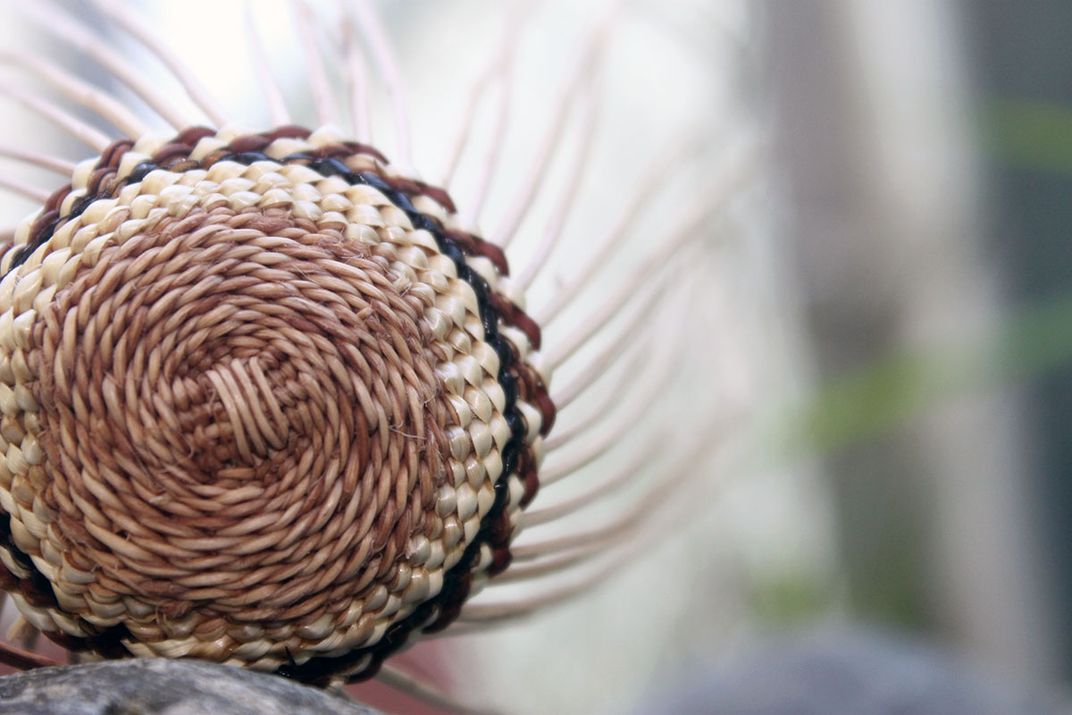
A Weaver’s Journey
While Carolyn’s life began in the San Francisco Bay Area, she traces her path to basketweaving back to her Karuk grandmother. Gladys (Temple) Matzen grew up in the Karuk community in Happy Camp, California, just a few miles south of the Oregon border. At a very young age, like so many Native American children, Gladys was forcibly taken from her home and sent to a government boarding school. She lived many years of her early life in Oregon at Chemawa Indian School, away from her community and the life she knew. She was later sent to Fort Lapwai, a one-time tuberculosis sanatorium in Idaho.
“She never went back home after she left the sanatorium, and she never returned permanently to Happy Camp,” Carolyn said. “It was her life and experience in boarding school that really created a disconnection in our family to our Karuk culture. My grandmother didn’t talk about her life. She didn’t talk about her language. And my dad didn’t grow up in the Karuk culture. It wasn’t until later on when my sister was working for the Karuk Tribe as a language coordinator and she invited me to learn how to weave baskets that I began to work with the weavers who lived in my grandmother’s homeland.”
As a jeweler and multimedia artist, using her hands has always come naturally for Carolyn, and she looked forward to learning how to weave. It was also a chance for her to travel to Happy Camp and visit with fellow community members, a chance for her to focus on her own personal identity.
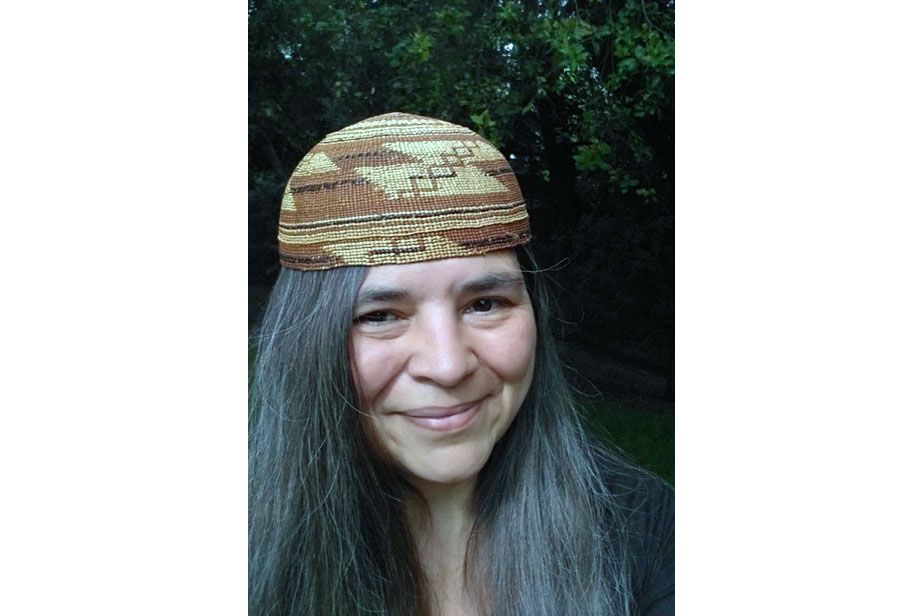
“Of course, when I went up there for the first time, I really didn’t have much of an idea of what it would mean to be a weaver—how intense of a practice it is, how it’s a lifeway rather than a craft or an art practice. It was unlike anything else that I had tried.”
“What it most reminded me of is a dance,” Carolyn explained. “From the time I was six until I was in my thirties, I was a ballet dancer and I also taught ballet, and there’s an aspect of muscle memory, of doing something over and over again so that it’s encoded in your muscles. That’s one of the things that I found with weaving: through repetitive action, it’s like a dance. It’s remembering where and how your hands move. It’s the strength you need to work with the tension of the materials. Every time I weave a basket, there is always this fascinating conversation that happens between me and my materials.”
Carolyn credits Wilverna (Verna) Reece as her mentor and teacher, and she has also benefited from the expertise and friendship of weavers Paula McCarthy and Brittney Souza. Working with these accomplished women taught Carolyn about the role of basketry in Karuk life, the importance of basket weaving as a central lifeway.
“Weaving is not just about the object itself—it’s not just about the thing or its physical presence. It encompasses our history as Karuk people. It encompasses the ways in which we’ve survived through horrific genocide and racism here in Northern California. It’s a sign of our resilience and our presence. It is our resilience and our presence.
“Weaving is the way in which we view the world and walk through it. If we’re outside, we’re always seeing if certain plants are ready to gather at certain times. We get to know places and spaces and individual plants. By gathering, you’re walking in a space that’s animate and alive and that you intimately know.”
Carolyn also drew my attention to the centrality of the Karuk language to weaving, how every basket has a role to play in the community. Each has a life of its own. “In our Karuk language, we have sípnuuk, which are storage containers. We have ápxaan, which are basket caps. We also have sipnúk’anamahach, which are little trinket baskets. There are an immense variety of words for our different baskets, and these words express the baskets’ purpose and meaning. The words are animate, and they have a belonging and a sense of aliveness.
“We can know the baskets more by understanding the ways that they’re linked to our ceremony and our environments through our language.” Baskets are a part of life.
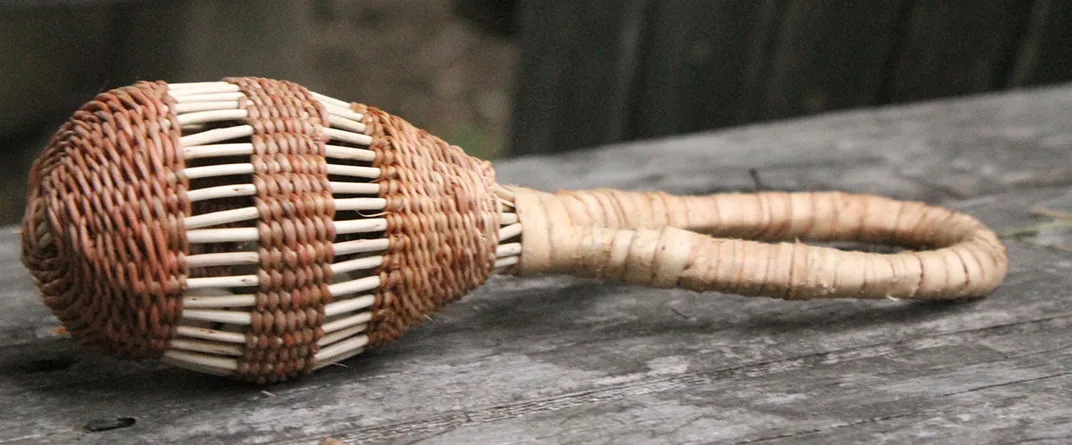
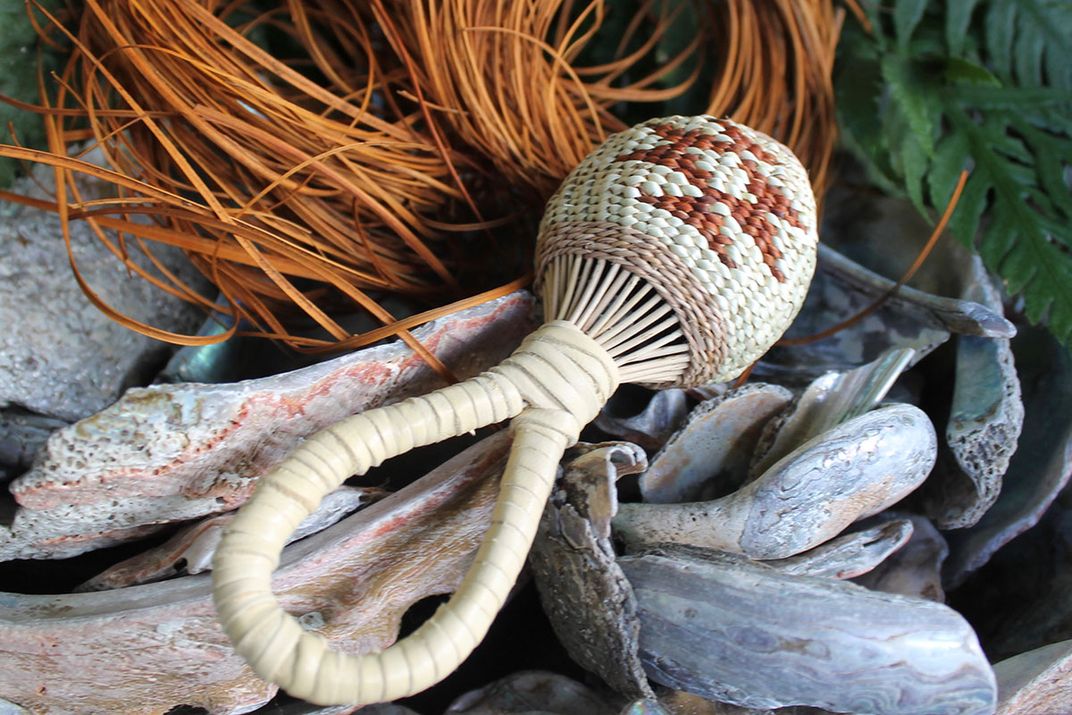
Living through Pandemic and Wildfire
Despite the strength and vitality of Karuk basket weaving, the pandemic has deeply affected many weavers. The threat of serious illness and the public health measures required to keep communities safe have shaped how weavers walk through and tend their ancestral gathering spaces. They have shaped how they are able to interact with their weaving family.
“It’s been really hard to be so isolated,” Carolyn said. “For most of the pandemic, I was living in the Bay Area and not close to my community in Northern California. It’s difficult for weavers who live far from their tribal lands, far from where we gather our materials. Our plants grow in very specific places and areas. So for me to gather, I would typically have to travel six hours from my house—and with the pandemic, with stay-at-home orders, social distancing, and protecting our Elders who typically gather together, it limited my ability to go gather.”
But while stay-at-home orders have profoundly changed how people have come together since the onset of the pandemic, during this period, Carolyn told me about how some artists and community leaders began embracing virtual platforms like Zoom, Facebook Live, and YouTube to teach private weaving classes.
While connecting with and learning from others virtually has become commonplace during the pandemic, Carolyn pointed out the many doors this technology has opened, and the endlessly creative ways that people are mobilizing it.
“Engaging in the virtual world has really opened up participation to those who live far from their teachers. It’s really exciting that people have been embracing this technology to reach out to bring us together again, but while at the same time keeping us all safe. And who knows how many of these participants will increase their engagement after the pandemic?”
Carolyn and I discussed how the advent of virtual teaching might inspire and encourage more emerging weavers to attend in-person events once the threat of the virus has diminished.
“While the online experience is never going to replace the in-person, experiential learning, we’re bringing more people together. We’re reaching more people and creating a larger community. And these are methods that we can now incorporate and continue using in the future to be able to stay connected. Elders are now using FaceTime who weren’t before!”
I asked Carolyn what she has seen in the digital world recently that has inspired her. “Just hearing other people’s stories, hearing about other people’s inspirations, and what’s really at the core of their own practice has been so inspiring to me. I recently attended a virtual talk by Brian D. Tripp (Karuk) and Lyn Risling (Karuk), for example, where they discussed their art practice, and I found it really motivating. My biggest take-away from them was that you can’t call yourself an artist if you’re not actually doing it!
“One of the things that drives me as an individual is hearing other people’s stories and learning from other people’s stories. When basket makers weave together, we’re working, but we’re also talking about our experiences. Hearing these stories is reinvigorating. I am privileged to learn them, and I am filled with gratitude for the people who are willing to share them. And this is all still possible in the virtual realm.”
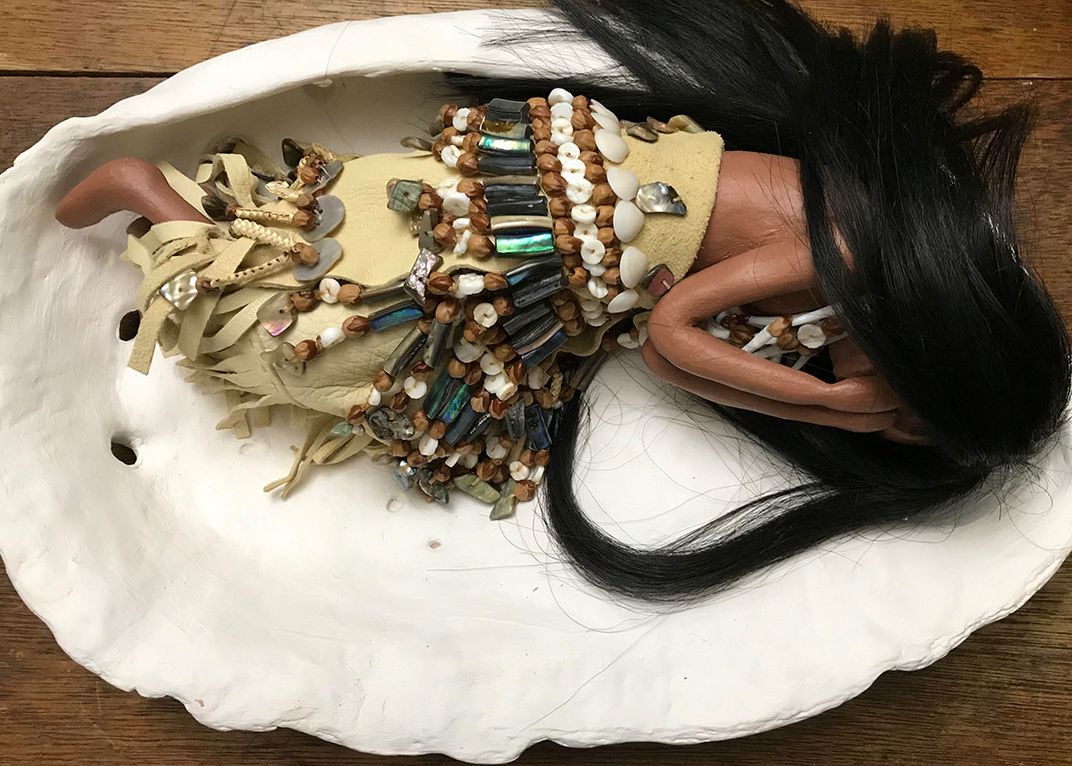
Soon, however, our conversation also turned to the effects of the devastating wildfires in Northern California, which have grown to reach unprecedented expanses and temperatures in recent years. In the late summer of 2020, they reached Happy Camp, destroying over one hundred homes and burning precious Karuk plant gathering spaces.
Carolyn is unsure whether she and her family of weavers will be able to return to these spots to gather as they have for generations.
While the increased frequency of these disasters in California has compounded the gathering limitations presented by the pandemic, they are also indicative of the broader environmental shifts brought on by our changing climate. “Places and weather patterns we could rely on decade after decade are changing so rapidly—we just don’t know what the future is going to hold, and this is related directly to climate change.”
Many within the Karuk Tribe and among its leadership have sought to address both of these new environmental realities by returning to ancestral land management practices. These practices had helped maintain ecological balance in the region for centuries before colonization.
“The Karuk Tribe has been working on prescribed burning as a way to mitigate these radical, devastating wildfires. They have been reintegrating the traditional ecological knowledge of prescribed, low-temperature burns to our forests that have been mismanaged by the United States Forest Service through their fire suppression efforts. This federal department currently manages over 1.2 million acres of Karuk traditional aboriginal territory.
“We’ve always had fire. Fire is a natural occurrence in Northern California—from dry lightning storms to intentional fires. Fire is ceremonial. Fire is sacred. In the past, we would set low-temperature fires that would just burn the forest litter. This type of burning is not only for the benefit of our weaving plants. It is also important for our medicines, and it establishes meadows. It maintains the health of our water, our rivers, our creeks. It also prevents these tremendous megafires from occurring. Whatever we can do to mitigate these is so vital. It’s vital for our health, for our survival.”
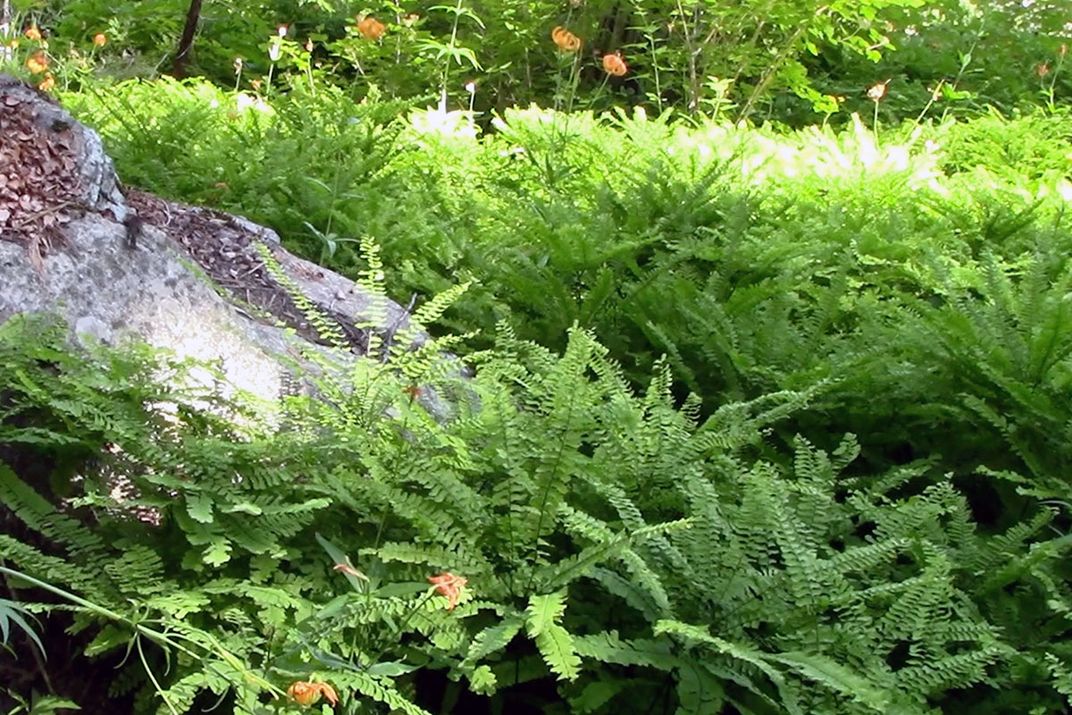
Looking Toward the Future
I asked Carolyn to look to a possible future and asked her what she wanted readers decades from now to know about this time.
“Native California basket weaving is not a ‘dying art,’” she said first. “Future generations need to know that it is thriving! Basket weavers have a wealth and a lifetime of knowledge that absolutely needs to be respected. If you want to know anything about basket weaving and Native culture, ask basket weavers!
“I want people in the future to know that Indigenous people, Native people, culture bearers, and cultural practitioners have known about climate change long before scientists. We see these changes in our landscape every single day, and I hope that people reading this know that despite those who deny climate change and despite government inaction, we have solutions through our traditional ecological knowledge. We have sustainable practices of caring for the land and water, the air and animals and plants. We have been doing this since time immemorial.
“I hope that the people of the future will be able to see that Indigenous people are leaders in reorienting environmental practices in a way that respects and honors the Earth.”
I then asked her how she thought we could get to that future as a people, as a country, as humans together.
“This future can be a reality if the people who hold stewardship over our lands understand that we need to work collaboratively to create solutions to reintegrate Indigenous traditional ecological knowledge and cultural and prescribed burning into our landscape. It would be beneficial if they no longer threw up so many barriers to the point where these actions don’t have an impact. We need to work together to combine the best of Western science and traditional ecological knowledge to mitigate climate change and to hit it hard. And this needs to be fast-tracked.
“There are people out there that have been doing this work and working collaboratively with hundreds of partners to address issues of climate change, but it needs to reverberate. It needs to have a much broader policy impact in order for these things to change.”
Despite the public health and environmental challenges, the world has a way of renewing itself. And spring has finally come to Northern California.
This time of year, I am reminded of Wilverna Reece and Carolyn’s self-published book, Gathering with Verna Reece: Willow Sticks and Willow Roots, in which they describe harvesting the sandbar willows that Karuk weavers rely on. Better known as pâarak, these plants are now starting to bud along the Klamath River, ready for gathering in late March and April. Their tiny green leaves are appearing, and weavers will be heading to their favorite harvesting spots, peeling pâarak branches to see if they are ready for cutting. When they find good branches, they will prune off the very tops, encouraging them to grow straight and tall for future harvests and for future weavers.
The cycle of gathering begins anew.
Emily Buhrow Rogers is an ACLS Leading Edge Fellow at the Center for Folklife and Cultural Heritage. She is looking forward to the coming of spring, and for the world to begin anew.
Carolyn Smith (Karuk) holds a Ph.D. in anthropology and is a traditional basket weaver and artist. In her academic work, Carolyn uses Indigenous methodologies to understand how Karuk basketry is profoundly interwoven with ways of knowing and being in the world. Most recently, she and a group of Indigenous and allied scholars collaborated with Ad Astra Comix to produce the series, “So you care about Indigenous scholars?” illustrating Indigenous survival, resistance, and resurgence.
